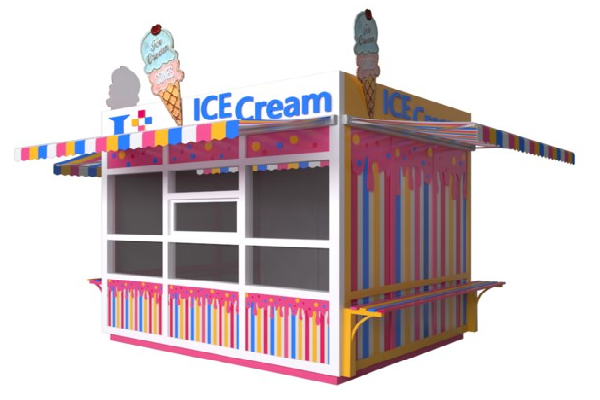What is a kiosk, pavilion, stall? The main types of LFA

Small architectural forms (LFAs) at the end of the last century became a real boon for many small business owners due to their many advantages. Used for commercial or decorative purposes, these handy and compact structures are great for small shops, nail salons, shoe repair shops and more.
The use of lightweight materials, quick installation, ergonomics and the absence of the need for a foundation have made kiosks and shopping pavilions very popular among entrepreneurs. That is why now in almost all large cities (including Kharkiv) the MAF is an integral part of the landscape.
When renting retail space for small businesses, entrepreneurs most often prefer small architectural forms because of the positive aspects described above. However, the question of which LFA to rent worries many business owners. Of course, in most cases they are guided by the type of activity, location, type of construction, the ability to carry out communications and other important aspects. From the point of view of classification, the MAF is conventionally divided into two types: a trade pavilion and a kiosk.
Kiosks are small, most often metal, structures intended for small retail trade or the provision of services. Their area can vary from 4 to 10 m2. A characteristic feature of the kiosk is a window through which trade is carried out, and customers do not enter the premises. Many people wonder if there is a difference between the terms “stall” and “kiosk”, but in fact they are almost synonymous.
By design, shopping pavilions can be called almost complete buildings with a separate entrance, into which the necessary communications can be carried out. Thus, it is possible to carry out commercial activities and receive visitors directly inside the trade pavilion. In such premises, the choice of goods and services that can be offered is much wider, since their area can be twice or even three times more? than the stall.